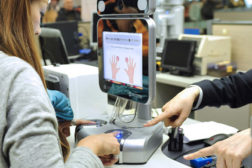Home » biometric access management
Articles Tagged with ''biometric access management''
Corporate entities and retailers are scrambling to shore up network security by addressing the primary vulnerability of network security: the login. Unique “behavioral” biometric may be the solution.
Are Login Credential Vulnerabilities the Root of Data Breaches?
February 10, 2015
Sign-up to receive top management & result-driven techniques in the industry.
Join over 20,000+ industry leaders who receive our premium content.
SIGN UP TODAY!Copyright ©2024. All Rights Reserved BNP Media.
Design, CMS, Hosting & Web Development :: ePublishing









